#deborah voigt
Text
youtube
Alenxander von Zemlinsky, Lyrische Symphonie, op. 18 (4. Langsam). Texto de Rabindranath Tagore.
Giuseppe Sinopoli, director
Deborah Voigt, soprano
Sprich zu mir, Geliebter.
6 notes
·
View notes
Text


#la fanciulla del west#deborah voigt#marcello giordani#Minnie and Dick Johnson#opera#opera tag#debbie voigt
4 notes
·
View notes
Text

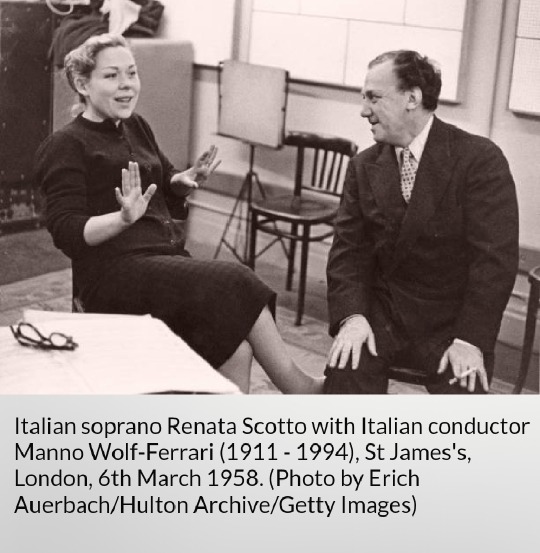

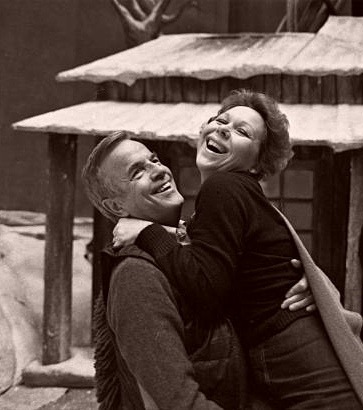



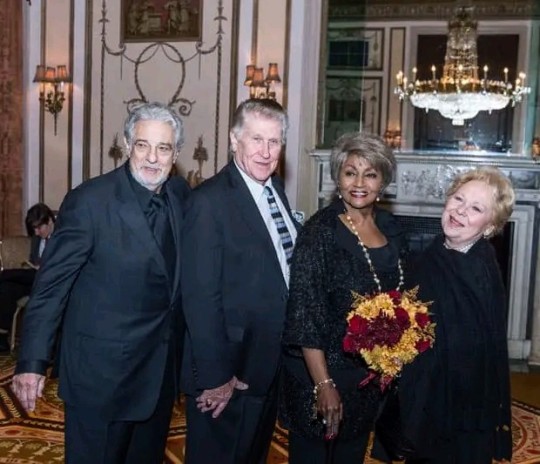
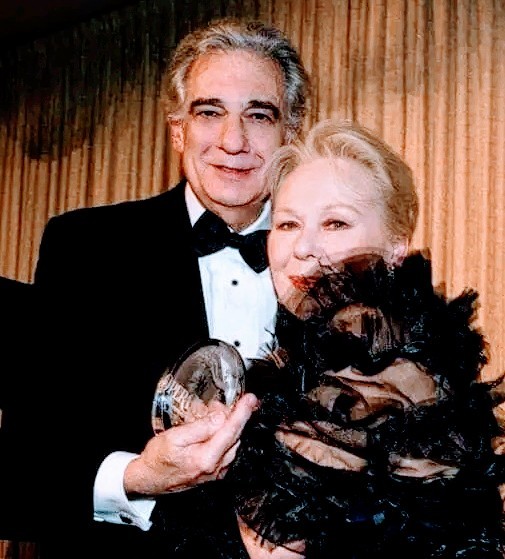

RENATA SCOTTO with:
Sondra Radvanovsky & Stefanie Blythe. Copyright ©️ Getty Images
With the brilliant Composer and Conductor ERMANNO WOLF+FERRARI. Copyright ©️ Getty Images.
With Luciano Pavarotti, Shirley VERRETT and Matteo Manuguerra. Copyright ©️ Getty Images.
With FRANCO ZEFFIRELLI.
The last GREAT SOPRANO of the GOLDEN ERA. Copyright ©️ Getty Images.
With James Levine & Deborah Voigt. Copyright ©️ Getty Images.
With Deborah Voigt. Copyright ©️ Getty Images.
With Plácido Domingo Sherrill Milnes & Grace Bumbry.
With Plácido Domingo.
With Plácido Domingo.
#4operalove#opera#renata scotto#placido domingo#deborah voigt#4opera+love#sondra radvanovsky#ermanno wolf+ferrari#luciano pavarotti#shirley verrett#matteo manuguerra#franco zeffirelli#james levine#sherrill milnes#grace bumbry
3 notes
·
View notes
Text
tagged by the lovely @mercutiovibes thaaaanks
rules: put your music on shuffle and list ten songs that come up, then tag others.
Talk- Hozier
sweater weather - the neighborhood
The unwanted animal - the amazing devil
Thats life - Frank sinatra
Vielleicht vielleicht - Annenmaykantereit
Please, please, please let me get what i want - The smiths
Forward - Oneroid ft. Deborah Voigt from the over the garden wall soundtrack
Rich girl - Gwen Stefani, eve
Wicked game - Chris Isaak
Liquid smooth - mitski
tagging: @trossibop, @kylivier,@readingbythestreetlights as always if you dont want to its okay ily
4 notes
·
View notes
Text
Les Troyens (Hector Berlioz) - MET, 05/janeiro/2013
Ópera completa com legenda em português.
1. Instale o programa “Bigasoft Video Downloader Pro”
Ele permite download do Metropolitan Opera.
2. Seriais
Vá ao menu “Ajuda” - “Registrar” e digite um serial no campo “Código de Licença”.
3. Adicione a URL abaixo no programa Bigasoft para fazer o download.
https://www.metopera.org/Season/On-Demand/opera/?upc=811357016251
4. Legenda em português: link.
Há muito fascinado pela Eneida de Virgílio, Berlioz finalmente adaptou o épico em Les Troyens, grand opéra francesa espetacular de cinco atos, com 22 papéis, enormes coros e balé. Os Atos I e II são denominados "A queda de Troia"; os Atos III a V, contando a trágica história de amor de Dido e Enéas, são chamados de "Os troianos em Cartago".
Les Troyens é a obra mais ambiciosa de Berlioz, o ponto culminante de toda a sua carreira artística (segundo o próprio compositor), mas ele não viveu para vê-la executada em sua totalidade. Após décadas de abandono, hoje esta ópera é considerada por alguns críticos de música como uma das melhores já escritas.
Muitos contos antigos são ambientados em meio às consequências da Guerra de Troia, tendo como pano de fundo a ascensão de uma nova ordem a partir da queda da antiga. A Eneida é um dos mitos supremos da fundação da civilização europeia, consagrando Roma como o ponto culminante da realização humana em termos tão poderosos que seu imaginário permanece potente e difundido até hoje. A devoção apaixonada de Berlioz pela Eneida era mais do que abstrata: um visionário autoconsciente que buscava novos rumos na arte e na música, sua devoção ao épico também era profundamente pessoal.
Esta obra-prima épica de Berlioz reconta a magnífica saga das consequências da Guerra de Troia e as façanhas de Enéias. O tenor em ascensão Bryan Hymel, em sua estreia no Met, estrela como o herói encarregado pelos deuses de fundar a cidade de Roma. Susan Graham é Dido, rainha de Cartago, que se torna amante de Enéias, e Deborah Voigt canta Cassandra, a princesa troiana cujos avisos sobre a iminente destruição de Troia não são ouvidos. A produção atmosférica de Francesca Zambello é dirigida pelo maestro Fabio Luisi.
Programa
"Mon souvenir vivra"
"Malheureux Roi!"
Papéis principais:
- Cassandra: profetisa troiana, filha de Príamo
- Corebo: um jovem príncipe asiático, noivo de Cassandra
- Príamo: rei de Troia
- Enéas: herói troiano
- Dido: a rainha viúva de Cartago
Sinopse: Troia e Cartago, na Tunísia, na Antiguidade lendária.
Ato I - A Queda de Troia
Os gregos saem de Troia após 10 anos de cerco e deixam um grande cavalo de madeira. Cassandra, a profetisa, adverte que a cidade está condenada, mas seu amado, Corebo, a ignora. Enéas comunica a morte de um sacerdote que pedia a destruição do cavalo. Numa procissão, o cavalo, que oculta soldados gregos, entra na cidade.
Ato II
O fantasma de Heitor, um líder troiano, manda Enéas fundar uma nova Troia na Itália (que se tornaria a cidade de Roma). Com a queda da cidade, Corebo morre e Cassandra se apunhala. Enéas foge, e seu palácio pega fogo.
Ato III - Os Troianos em Cartago
Os súditos de Dido juram protegê-la de Iarbas, o rei da Numídia. Chegam os troianos. Quando Iarbas ataca Cartago, Enéas acorre em defesa da cidade.
Ato IV
Dido e Enéas se apaixonaram, mas os sátiros clamam "Itália!" para Enéas. A vitória sobre Iarbas é comemorada com dança; Dido e Enéas festejam sua felicidade.
Ato V
Dido implora que Enéas fique, mas os fantasmas dos heróis troianos lhe dizem que vá. A esquadra parte, Dido acende uma pira fúnebre e se mata com a espada de Enéas.

0 notes
Text
Chill Sentenza - Safe Haven in Morocco - The list of Gangsta women.
Chill Sentenza -
The meaning of a safe haven is a place of safety or refuge.
Vous devez encourager ces femmes à chercher refuge au Maroc. Elles seront protégées par le roi du Maroc Mohammed 6. S'il leur arrive quelque chose ou si elles se sentent en danger, elles doivent se réfugier au Maroc, c'est le foyer le plus sûr pour ces femmes. Le refuge du Maroc.
Ces femmes auront des palais au Maroc, elles seront protégées par l'armée marocaine. Elles seront en sécurité chez eux au Maroc. Une vie paisible.
Voici la liste des femmes gangsters:
1- Simply Jess
2- Debby Coda
3- YesJulz
4- Sommer Ray
5- Tanaya Henry
6- Aisha Thalia Hite
7- Claudia Jordan
8- Foxy Brown Inga DeCarlo
9- Nicki Minaj
10- Vashtie Kola
11- Beyoncé Knowles- Carter
12- Gwyneth Paltrow
13- Jennifer Garner
14- Judy Greer (Judith Therese Evans)
15- Natalie Portman
16- Gal Gadot
17- Kim Kardashian (Kimberly Noel Kardashian)
18- Kimora Lee Simmons
19- Penélope Cruz Sánchez
20- Salma Hayek Pinault
21- Margot Elise Robbie
22- Marion Cotillard
23- Colbie Marie Caillat
24- Cobie Smulders (Jacoba Francisca Maria "Cobie" Smulders)
25- Lauryn Noelle Hill
26- Nailah Thorbourne
27- Tracey Elaine Edmonds
28- Erykah Badu (Erica Abi Wright)
29- Mya Marie Harrison
30- Keri Lynn Hilson
31- Jhené Aiko Efuru Chilombo
32- Mariah Carey
33- Missy Elliott
34- Tamala Reneé Jones
35- Lauren Nicole London
36- Mary Jane Blige
37- Robyn Rihanna Fenty
38- Stacey Lauretta Dash
39- Raquel M. Horn (@raquelmhorn)
40- Shanti Hoffman (@shantihoffman)
41- Hencha Voigt (@henyvbaby)
42- Remy Ma (Reminisce Kioni Mackie)
43- JoJo (Joanna Noëlle Levesque)
44- Scarlett Ingrid Johansson
45- Malin Maria Akerman
46- Melanie Jayne Lynskey
47- Priyanka Chopra Jonas
48- Jameela Alia Jamil
49- Deepika Padukone
50- Jamie Jilynn Chung
51- Meagan Monique Good
52- Tracee Ellis Ross (Tracee Joy Silberstein)
53- Joy Bryant (born October 18, 1974)
54- Dawn Olivieri (born February 8, 1981)
55- Stacy Ann "Fergie" Ferguson (born March 27, 1975)
56- Yolanda Whitaker, also known as Yo-Yo (born August 4, 1971)
57- Robin Yvette Allen (born February 6, 1975), known professionally as the Lady of Rage
58- Rashia Tashan Fisher (born December 18, 1974), known professionally as Rah Digga
59- Stephanie Victoria Allen (born 14 December 1991), better known by her stage name Stefflon Don
60- Helen Folasade Adu (born 16 January 1959), known professionally as Sade Adu or simply Sade
61- Jessica Burns (@mrsjessicaburns)
62- Sarah Chapman (@CallMePumpkin)
63- Sofía Margarita Vergara Vergara (born July 10, 1972)
64- Jacquelyn "Jaci" Davette Velasquez (Jaci Velásquez, born October 15, 1979)
65- Roselyn Milagros Sánchez Rodríguez (born April 2, 1973)
66- Otmara Marrero (born March 1, 1989) (age 34)
67- Edurne Ganem, known professionally as Edy Ganem (born September 20, 1983 (age 40)
68- Janina Uhse (@janinauhse)
69- Nicole Scherzinger (@nicolescherzinger)
70- Melody Thornton (@melodythornton)
71- Shannon Thornton (@shannonthornt_n)
72- Ashley Monique Harper (@ashleymoniqueharper)
73- Natasha Marc (@natashamarc)
74- Tara Leigh Patrick (born April 20, 1972), known professionally as Carmen Electra.
75- Pamela Denise Anderson (born July 1, 1967)
76- Diamonté Quiava Valentin Harper (born July 2, 1993), known professionally as Saweetie
77- Antonia D. Reed (born April 22, 1966), known professionally as Bahamadia
78- Rachael Leigh Cook (born October 4, 1979)
79- Jennifer Love Hewitt (born February 21, 1979)
80- Jodi Lyn O'Keefe (born October 10, 1978)
81- Jenna Elfman (Jennifer Mary Elfman) (born September 30, 1971)
82- Julia Fox (born February 2, 1990) is an Italian-American actress and model
83- Marisa Tomei (born December 4, 1964) Italian-American actress.
84- Debi Mazar (Deborah Anne Mazar Corcos) (born August 13, 1964)
85- Zoë Isabella Kravitz (born December 1, 1988)
86- Katrina Laverne Taylor (born December 3, 1978), known professionally as Trina
87- Keyshia Miesha Cole (born October 15, 1981)
88- Taral Hicks (born September 21, 1974)
89- Vivica Anjanetta Fox (born July 30, 1964)
90- Vanessa Lynn Williams (born March 18, 1963)
91- Regina Rene King (born January 15, 1971)
92- Angela Evelyn Bassett (born August 16, 1958)
93- Viola Davis (born August 11, 1965)
95- Angela Martinez (born January 9, 1971)
96- Teri Hatcher (born December 8, 1964)
97- Nicollette Sheridan (born 21 November 1963)
98- Eva Jacqueline Longoria Bastón (born March 15, 1975)
99- Kristin Laura Kreuk (born December 30, 1982)
100- Erica Durance (born June 21, 1978)
101- Althea Rae Duhinio Janairo (born January 2, 1967), known professionally as Tia Carrere
102- Carrie-Anne Moss (born August 21, 1967)
103- Jill Marie Jones (born January 4, 1975)
104- Angelina Jolie (born Angelina Jolie Voight; June 4, 1975)
105- Kristen Anne Bell (born July 18, 1980)
106- Jada Koren Pinkett Smith (born September 18, 1971)
107- Kathryn Marie Hahn (born July 23, 1973)
108- Lake Siegel Bell (born March 24, 1979)
109- Hannah Dakota Fanning (born February 23, 1994)
110- Kirsten Caroline Dunst (born April 30, 1982)
111- Eliza Patricia Dushku (born December 30, 1980)
112- Gabrielle Monique Union-Wade (born October 29, 1972)
113- Essence Uhura Atkins (born February 7, 1972)
114- Tasha Smith (born February 28, 1971)
115- Kristin Landen Davis (born February 23, 1965)
116- Sharon Ann Leal (@realleal)
117- Jennifer Kate Hudson (born September 12, 1981)
118- Björk Guðmundsdóttir (born 21 November 1965)
119- Lupita Amondi Nyong'o (born 1 March 1983)
120- Carmen Elizabeth Ejogo (born 22 October 1973)
121- Milena Markovna "Mila" Kunis (born August 14, 1983)
122- Elise Demetria Neal (born March 14, 1966)
123- Lori Harvey (born January 13, 1997)
124- Chantel Taleen Jeffries (born September 30, 1992)
125- Nicole Camille Richie (born September 21, 1981)
126- Nazanin Aliza Mandighomi (born September 11, 1986)
127- Paris Whitney Hilton (born February 17, 1981)
128- Adrienne Eliza Bailon-Houghton (born October 24, 1983)
129- Raven-Symoné Christina Pearman-Maday (born December 10, 1985),
130- Keshia Knight Pulliam (born April 9, 1979)
131- Lilakoi Moon (born Lisa Michelle Bonet; November 16, 1967), known professionally as Lisa Bonet
132- Ming-Na Wen (born November 20, 1963)
133- Lucy Alexis Liu (born December 2, 1968)
134- Drew Blythe Barrymore (born February 22, 1975)
135- Cameron Michelle Diaz (born August 30, 1972)
136- Amanda Peet (born January 11, 1972)
137- Demi Gene Moore (born November 11, 1962)
138- Elizabeth Stamatina "Tina" Fey (born May 18, 1970)
139- Amy Poehler (born September 16, 1971)
140- Melissa Ann McCarthy (born August 26, 1970)
145- Lauren Graham (born March 16, 1967)
146- Charlize Theron (born 7 August 1975)
147- Maura Therese Tierney (born February 3, 1965)
148- Tisha Michelle Campbell (born October 13, 1968)
149- Tichina Rolanda Arnold (born June 28, 1969)
150- Janet Damita Jo Jackson (born May 16, 1966)
151- Vanessa Anne Hudgens (born December 14, 1988)
152- Kendall Nicole Jenner (born November 3, 1995)
153- Emily O'Hara Ratajkowski (born June 7, 1991)
154- Hayden Lesley Panettiere (/born August 21, 1989)
155- Jenna Marie Ortega (born September 27, 2002)
156- Melissa Barrera Martínez (born 4 July 1990)
157- Rachel Anne McAdams (born November 17, 1978)
158- Sarah Jessica Parker (born March 25, 1965)
159- Kerry Marisa Washington (born January 31, 1977)
160- Gina Torres (born April 25, 1969)
161- Rosario Isabel Dawson (born May 9, 1979)
162- Tara Donna Reid (born November 8, 1975)
163- Emmanuelle Sophie Anne Chriqui (born 10 December 1975)
164- Jamie-Lynn Sigler (born May 15, 1981)
165- Amanda Leigh Moore (born April 10, 1984)
166- Jessica Marie Alba (born April 28, 1981)
167- Marina Ann Hantzis (born 1988), known professionally as Sasha Grey
168- Verónica Rodríguez Fiño (born 1 August 1991)
169- Christine Mackinday, known professionally as Christy Mack (born 1991 or 1992) (age 31–32)
170- Kendra Lust (@kendralust)
171- Raylin Joy (born February 18, 1987), formerly known by her stage name Skin Diamond
172- Vicki Chase (@therealvickichase)
Voici le film "Safe Haven" la bande-annonce:
youtube
0 notes
Text
The Winner Of The 12th Glenarm Festival Of Voice Is Announced After A Thrilling Competition Finale As The Festival Celebrates Its Return To Glenarm
The Winner Of The 12th Glenarm Festival Of Voice Is Announced After A Thrilling Competition Finale As The Festival Celebrates Its Return To Glenarm
Northern Ireland Opera’s annual Festival of Voice returned to the village of Glenarm this
weekend after two years relocated in Belfast due to the pandemic.
The annual vocal competition is a highlight of the Festival and on Sunday evening, five
opera singers chosen from applicants from across the island of Ireland competed for the
Deborah Voigt Opera Prize and to become the NI Opera Young Opera…

View On WordPress
0 notes
Text
✨✨Shut up my friend✨✨

#Opera#Verdi#Un ballo in maschera#Dmitri Hvorostovsky#Marcelo Alvarez#Deborah Voigt#all rights belong to their respective owners#their friendship... uwu
12 notes
·
View notes
Text
Your Minnie:

My Minnie:
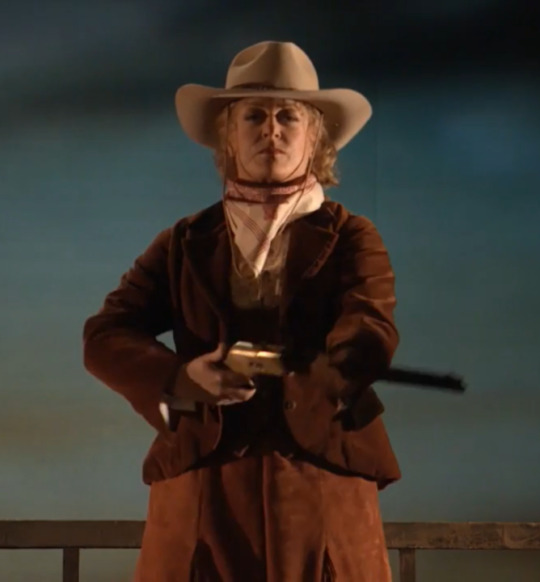
#i love both tho!#opera#opera shitpost#opera shitposts#opera memes#minnie#minnie mouse#la fanciulla del west#the girl of the golden west#puccini#giacomo puccini#deborah voigt#debbie voigt#two wonderful minnies#both badass
21 notes
·
View notes
Text
Agrippina on PBS
The Met’s production of Agrippina is airing on PBS June 7. Check local listings for exact times and possible encore presentations.
Deborah Voigt on hosting duty
#agrippina#joyce didonato#kate lindsey#brenda rae#iestyn davies#matthew rose#harry bicket#met opera#opera#met in hd#pbs#deborah voigt
2 notes
·
View notes
Text
Debbie Voigt posted some photos of her wedding on Instagram ... awww super cute!!! I wish her (and her husband) all the best 🥰🤩

11 notes
·
View notes
Photo

Brünnhilde, Immolation scene, Götterdämmerung, Act III, Scene 3
Based on poster for the Metropolitan Opera’s 2012 production, Deborah Voigt as Brünnhilde
#ring#inktober 2019#day one#brunnhilde#gotterdammerung#der ring des nibelungen#the ring#richard wagner#metropolitan opera#deborah voigt#artists on tumblr#sketch daily
8 notes
·
View notes
Photo

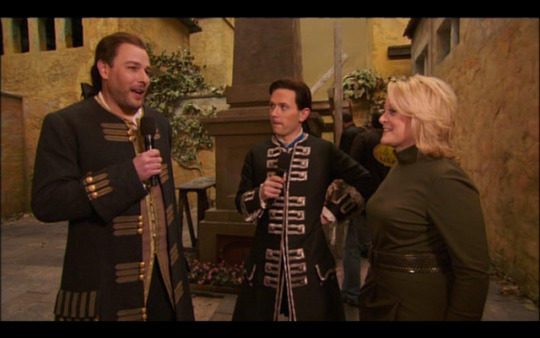

gpoy boys, gpoy
#rodelinda#andreas scholl#iestyn davies#behind the scenes#countertenor#opera#opera baes#deborah voigt
3 notes
·
View notes
Text
Met opera asks
im terribly late with these and im so sorry!! my internship has been crazy lately and im also balancing a part time job :(( thank you to everyone who tagged me and a big thank you to @opera-my-beloved for running this- ill catch up quickly by combining the days i missed here:
Met opera asks day 1
What’s a production you’ve seen that changed your whole opinion of an opera?
2017 rosenkav (aka the one that launched a thousand gifs)- I already adored Strauss's orchestral works (the two years i studied his oboe concerto were so worth it) but this production somehow made a story which felt very remote to me hit home and cemented rosenkav as one of my favorite operas
What is an opera composer you’re trying to explore more?
just to list a few- Massanet, Donizetti, Handel (mostly composers i haven't been exposed to as much through orchestra, wind quintet, and solo oboe rep)
Did you discover any new favorite singers?
so many!! juan diego flórez, natalie dessay, deborah voigt, piotr beczala, isabel leonard, and ofc elīna garanča <3 also gained even greater appreciation for renee fleming, dmitri hvorostovsky, and joyce didonato
What’s an opera (or production) that you wish you could watch again for the first time?
nothing will ever top that 2007 eugene onegin- tchaik's music is always an incredible emotional journey and i was literally in a state of semi-shock the whole time
Met opera asks day 2
Out of all of the new productions/operas you’ve seen, what has been the most meaningful?
2007 eugene onegin; quite literally life changing
What’s an opera that changed your opinion about a composer or genre?
Rossini's la cenerentola- ngl i had (and still have) a bit of a grudge against rossini for that hellish la scala di seta excerpt but this opera won me over completely (he still did not have to inflict la scala on me though)
Are there any operas that you'd listened to but never seen on stage before?
eugene onegin (which really showed me the visual power of opera)
What's an opera you would love to see performed in-person? (even if it was in the past)
eugene onegin w fleming and hvorostovsky, rosenkav w fleming and elīna garanča, elīna garanča's carmen...
Met opera asks day 3
Are there any operas you strongly associate with a specific time in your life?
prokofiev's war and peace in feb/march because i read the book over those months and watched the opera for the first time (idk why the met doesn't have any recordings available though)
Do you know the next opera you want to discover?
i have a running list but the one on top is la forza del destino
Are there any operas you'd write fanfiction for (or you wish had more fics)?
rosenkav, esp because there's plenty of room for very queer reinterpretations
What is your comfort opera?
kind of weird, but cavalleria rusticana (its cathartic or something) and for something lighter, la cenerentola
Met opera asks day 4
What’s an opera that became an unexpected favorite?
def dialogues des carmelites (though i should have known bc i love poulenc so so much) just bc it seemed so heavy and dark
Are there any operas you cannot get into no matter how hard you've tried?
the ring cycle- i have tried but it just does not do it for me (also has the unfortunate association w this weird philosophy major who asserted this was his favorite opera but had never listened to like,, tristan und isolde; pls do not try to flirt w me this way)
Do you have any opera comfort characters?
carmen (i could talk for hours abt her!! but succinctly: girlboss), the marschallin, octavian, santuzza, tatiana...
What’s an opera/production that you'd like to get teleported into?
if we're talking about aesthetics: 2017 rosenkav, 2018 samson et dalila, 2012 manon, marnie
the actual world of the opera: capriccio (what could be better than living in luxury, being courted, and enjoying art? the dream life)
#opera tag#opera#operablr#goodbye met#met streams#watch me fall back behind right after catching up lmao#things have been busy but im doing ok#might be quiet for a few more weeks
11 notes
·
View notes
Text
I Know, I Know, I Know
In Slaughterhouse-Five (1969), Kurt Vonnegut quotes David Irving for the death toll from the firebombing of Dresden: 135,000 dead. Irving happens to be a Holocaust denier. And that number happens to be a lie.
Towards the end of the book, Vonnegut quotes Irving by name:
One of the books that Lily had brought Rumfoord was The Destruction of Dresden, by an Englishman named David Irving. It was an American edition, published by Holt, Rinehart and Winston in 1964. What Rumfoord wanted from it were portions of the forewords by his friends Ira C. Eaker, Lieutenant General, U.S.A.F., retired, and British Air Marshal Sir Robert Saundby, K.C.B., K.B.E., M.C., D.F.C., A.F.C.
I find it difficult to understand Englishmen or Americans who weep about enemy civilians who were killed but who have not shed a tear for our gallant crews lost in combat with a cruel enemy, wrote his friend General Eaker in part. I think if would have been well for Mr. Irving to have remembered, when he was drawing the frightful picture of the civilians killed at Dresden, that V-1’s and V-2’s were at the very time falling on England, killing civilian men, women, and children indiscriminately, as they were designed and launched to do. It might be well to remember Buchenwald and Coventry, too.
Eaker’s foreword ended this way:
I deeply regret that British and U.S. bombers killed 135,000 people in the attack on Dresden, but I remember who started the last war and I regret even more the loss of more than 5,000,000 Allied lives in the necessary effort to completely defeat and utterly destroy nazism.
So it goes.
The figure is significant. It is more than Hiroshima, where 70,000 to 80,000 died in the initial bombing. “Not many Americans knew how much worse it had been than Hiroshima, for instance,” Vonnegut writes early in Slaughterhouse-Five. “I didn’t know that either.” Not until he read Irving. presumably.
That figure was significant to the press coverage, like the New York Times review of March 31, 1969:
Kurt Vonnegut Jr., an indescribable writer whose seven previous books are like nothing else on earth, was accorded the dubious pleasure of witnessing a 20th-century apocalypse. During World War II, at the age of 23, he was captured by the Germans and imprisoned beneath the city of Dresden, "the Florence of the Elbe." He was there on Feb. 13, 1945, when the Allies firebombed Dresden in a massive air attack that killed 130,000 people and destroyed a landmark of no military significance.
Or the Sunday review of April 6, 1969:
Kurt Vonnegut speaks with the voice of the “silent generation,” and his quiet words explain the quiescence of his contemporaries. This is especially true of his sixth novel, “Slaughterhouse-Five,” in which he looks back -- or tries to look back -- at his wartime experience. In the first chapter he tells us how for over 20 years he has been trying to re-create a single event, the bombing of Dresden by American and British pilots. Vonnegut had an unusual perspective on that event. Safe, as a prisoner of war in a deep cellar under the stockyards, he emerged to find 135,000 German civilians smoldering around him. Dresden had been an open city. We closed it. We.
They led with the figure. It was important. This was the above the headline in the Sunday review: “Like Lot’s wife, he looked back -- at the destruction of Dresden and 135,000 dead.”
As Richard Evans discovered in the 1990s, Irving more or less fabricated that figure. As he recounted in Lying About Hitler (2001):
How many people did Irving think had been killed in the raids, and on what evidence did he base his estimates? The first source he used was information supplied to him by Hans Voigt, who had been a local official in Dresden at the time of the raids. Four days after the attack, missing persons search bureau was set up in the Saxon Ministry of the Interior. Voigt, at the time an assistant school master. was put in charge of establishing a dead persons department for the bureau to collect the records and personal effects of those people already dead, and of those still buried in the ruins. Irving said that it was this department which was “responsible for the identification of the victims and for arriving at some final estimate of the death-roll.”
Voigt’s office had four different filing systems for different data. The first were garment cards, onto which samples of garments taken from unidentified bodies were pasted, together with date, location, and so on. Voigt told Irving that up to the time of the capitulation “we had almost twelve thousand of these cards completed.” The second list was of miscellaneous personal belongings of the unidentified. The third was an alphabetical list of bodies identified by personal papers. The fourth was a list of wedding rings recovered from bodies. With these four indices the dead persons department was “able to clear up the identity of some 40,000 of the dead.” Thus Irving arrived at an “absolute minimum” death toll of 40,000. This in turn tallied with the figure of 39,773 given by Georg Feydt, the first person to write a reasonably considered account of the attack in 1953.
However, Irving did not accept 40,000 as the actual figure because Voigt had told Irving that he himself “estimated that the final number would have been 135,000.” In 1963 Irving was reported to have explained: “The Germans simply struck off the first digit to make the figure more acceptable to the Russians, who contended that Bomber Command was not a powerful weapon.”” In other words, he apparently thought that the Russians wanted to reassure the citizens of the Eastern bloc that Western bombing was not very dangerous. There was no evidence for this supposition. Voigt wrote to Irving as early as September 1962, blaming the amendment on “Dresden officials” (especially the then mayor Walter Weidauer), who “reduced the figure out of fear of the ‘Big Four,’ so as not to speak ill of them.” This did not seem to me to be particularly strong motive. The Russians were not involved in the bombing of Dresden. At the height of the Cold War, they would have had every incentive for inflating the figure, so as to put the Western Allies in a bad light. Yet Irving repeated the claim in 1995.
There was no corroborative evidence of any kind about the missing digit. Moreover Voigt was apparently not a popular man with the communist authorities in Dresden. Weidauer decried him as a “virulent fascist” who had been rightfully thrown out of East Germany. This was typical of the language the Communists used for people who proved a nuisance to them. Still, Voigt, then living in West Germany, may have had a political motive in accusing the Soviet and East German authorities of falsifying the statistics. Weidauer added that the death register was still extant in the Dresden Town Hall with a highest card number of 31,102 for an unidentified body. In addition there were the so-called street books. The numbers in the street books, which were compiled according to the streets and houses where the dead were found, exactly matched those on the registration cards. Irving could only sustain the figure of 135,000, therefore, by relying on a postwar speculation which he must have known was shaky and was discounted by most other writers on the raid, with good reason. This did not say much for his claim that he based his work on careful research into contemporary documentation.
In later editions, Irving further falsified his numbers, and claimed higher death tolls, but the 135,000 always depended on that invention. He put a "1″ in front of “35,000″ and claimed that as the figure.
The probable death toll was lower than that 35,000, maybe 25,000 to 30,000. That came out in the judgment at Irving’s libel trial, David Irving v Penguin Books and Deborah Lipstadt, [2000] EWHC QB 115:
13.124 When asked what was the supporting evidence for these inflated claims, Irving relied on the estimates for the number of casualties made by Mehnert and Fetscher and on the recollection of Frau Grosse, which I have mentioned. He also testified that his claims had been based on estimates as high as 250,000 which he had received from a great many individuals. Irving neither identified the individuals nor disclosed the letters. He prayed in aid also the fact that there were in Dresden at the time an unquantified number of refugees fleeing before the advancing Russian army. Finally he relied on the estimate of Hans Voigt, summarised in paragraph 11.52 above, that 135,000 had been killed. But, as stated in paragraph 13.126 below, none of this material casts significant doubt on the accumulation of evidence that the true death toll was within the bracket of 25-30,000.
[...]
13.126 It appears to me that the evidence which I have summarised in paragraph 13.124 affords a very slender basis for the claims which Irving has made for the numbers killed in the raids. The evidence of Mehnert, Fetscher and Frau Grosse was secondhand and unverified. In the absence of any indication on what they were based, I do not consider the Irving should have given any credence to estimates in letters from unidentified individuals. His speculation about the number of refugees does little to cast doubt on the reliability of the figures quoted in the official reports. Voigt's evidence was uncorroborated and unlikely to be correct in the light of the number of deaths recorded on the official cards. In my view, Irving should not have quoted numbers based on this evidence. ... In my judgment the estimates of 100,000 and more deaths which Irving continued to put about in the 1990s lacked any evidential basis and were such as no responsible historian would have made.
For Irving, Dresden was a useful tool. If there were 135,000 or 250,000 dead at Dresden, it helped even the scales with the Allies. It was the mirror image of his Holocaust denial: German crimes were overstated and Allied crimes were understated.
Irving wanted his readers to see the bombing of Germany as the moral equivalent of the Holocaust. Evans again:
Irving wrote to Kimber in 1963 declaring his view that the crime of World War II had not been genocide but "innocentocide," the killing of civilians, and that therefore the Eastern and Western powers were just as guilty in his eyes as the Germans and the Japanese. For him Dresden was a crime. Nowhere in the earlier editions was there an explicit effort to draw the parallel. Instead, Irving allowed others to draw this obvious conclusion and then somewhat disingenuously congratulated them on their independence of mind. Thus he wrote to Sydney Silverman MP, who had reviewed the book in Tribune: "I am not someone who holds political views similar to your own, but I really must congratulate you— in spite of this—for having stuck your neck out so firmly and unmistakably by drawing a parallel between the Nazis' atrocities and what happened in Dresden; this is something I myself did not claim in my book.”
Three decades later, Irving was making the parallel explicit. In a speech delivered in Toronto on 8 November 1992, he estimated the numbers who died in Auschwitz (“most of them from epidemics,” he said) as 100,000. “Around one hundred thousand dead in that brutal slave labour camp.” Around 25,000 of these had been killed by shooting or hanging, according to German radio reports from Auschwitz received and decrypted by the British, he added. He continued:
Twenty-five thousand killed, if we take this grossly inflated figure to be on the safe side: That is a crime; there is no doubt. Killing twenty-five thousand in four years—1941, 1942, 1943, and 1944—that is a crime; there is no doubt. Let me show you a picture of twenty-five thousand people being killed in twenty-five minutes. Here it is, in my book, a vivid picture of twenty-five thousand people being killed in twenty-five minutes by the British (in February 1945) in Pforzheim, a little town where they make jewellery and watches in Baden, Germany. Twenty-five thousand people were being burned alive. ... That is what it looks like when twenty-five thousand civilians are being burned alive in twenty-five minutes. One person in four, in twenty-five minutes. One person in four in that town. As I said when I was speaking in Kitchener yesterday, it is as though somebody came to Kitchener, a town of about a hundred thousand people, and killed one person in four in twenty-five minutes. That too is a crime. Twenty-five minutes! In Auschwitz it was a crime committed over four years. You don't get it spelled out to you like that. Except by us, their opponents. When you put things into perspective like that, of course, it diminishes their Holocaust—that word with a capital letter.
Irvings almost incantatory repetition of the figures "twenty-five thousand" and "twenty-five minutes," mentioned in this passage respectively four times and five times, compared with his figure of twenty-five thousand for Auschwitz mentioned only twice, left no room for doubt about which crime he considered the greater.
That was what Dresden meant to Vonnegut, too:
I happened to tell a University of Chicago professor at a cocktail party about the raid as I had seen it, about the book I would write. He was a member of a thing called The Committee on Social Thought. And he told me about the concentration camps, and about how the Germans had made soap and candles out of the fat of dead Jews and so on. All I could say was, “I know, I know. I know.”
Vonnegut never amended Slaughterhouse-Five. So it goes.
153 notes
·
View notes
Note
Hi, this week the Met Opera is featuring "Leading Ladies: Opera's Greatest Heroines." Mon nite til 6:30 pm Tue - Carmen Anita Rachvelishvili as Carmen; Tue nite - Anna Netrebko as Lucia di Lammermoor; Wed - Sondra Radvanovsky in Bellini's Norma (also with Joyce DiDonato); Thur - Natalie Dessay in La Traviata; Fri - Hildegard Behrens as Tosca (1985, with Placido Domingo); Sat - Lisette Oropesa in Massenet's Manon; Sun - Deborah Voigt in Die Walkure

6 notes
·
View notes